|
||||||||||||||||||
|
|
Building a de-forested landscape |

|
|
|
#1 |
|
Not Enough Time
Offline Posts: 1,007
 -->
-->
Join Date: Aug 2009
|
I started this project by looking at photographs of deforested rainforest and other areas, and even by looking into the few patchy areas in my garden, trying to get a feel of how vegetation and trees and dirt all interacted and separated when deforestation occurs.
The materials I used were the following: MDF board Fibre board Newspaper (lots of!) Cardboard Masking tape Plaster-cloth (also known as ModRock, ArtRock or plaster-netting) Tepid water Woodland Scenics clump foliage Hornby Skale Scenics scatter, shrubbery and ballast 1) I placed the MDF board flat and screwed the fibre board to the sides and enclosed the structure. I then scrunched up the newsaper and arranged it in the shapes that I wanted, to make uneven landscape. Using the cardboard, I sculpted the road in-between the rockfaces and the cliff on the end. I also used cardboard placed on top of graduated rolls of newspaper to make the slope in the road at the side. In the following images, you can see that I made some lower land, with a road beside it leading to higher land, with the road cutting through raised rock verges on either side. A sheer cliff lies to the other side of the higher bit of land. 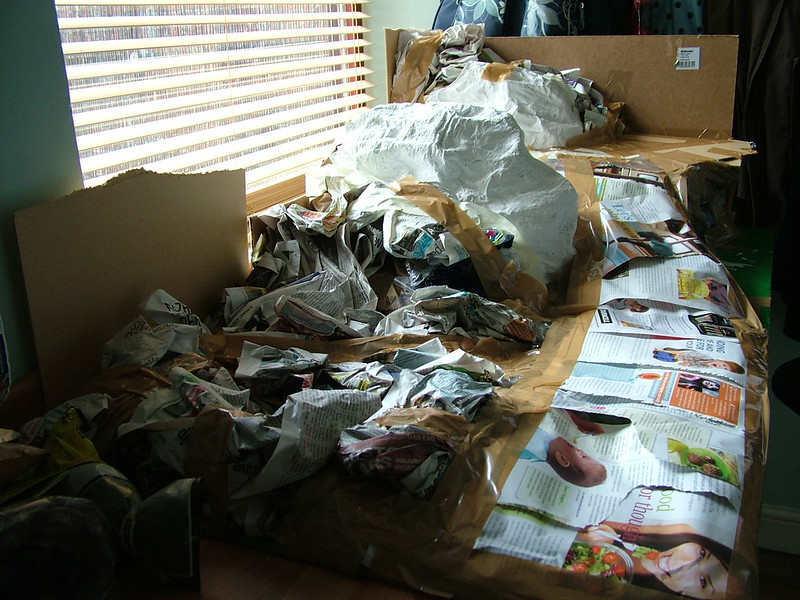 |

|

|
|
|
#2 |
|
Not Enough Time
Offline Posts: 1,007
 -->
-->
Join Date: Aug 2009
|
2) After securing all of the newspaper and cardboard with masking tape, I filled a bowl with warm water and used cut lengths of plast-cloth to cover the landscape.
 3) I covered the set with four layers of plaster-cloth, smoothing over the patches and perforations that were visible. I ensured that the water was kept warm by using freshly-run water every once-so-often, whenever there was a build-up of plaster in the bottom of the bowl. This ensured that the plaster-cloth dried was well soaked and workable. After completing this stage, I left the model to dry fully for 24 hours.  4) After drying fully, the plaster was very hard to the touch. I then set about painting the model with a combination of browns, greens, dark reds and greys, all acrylics. The undercoat could be acrylic or regular emulsion, since the set is quite large and cheap emulsion will do for undercoat. 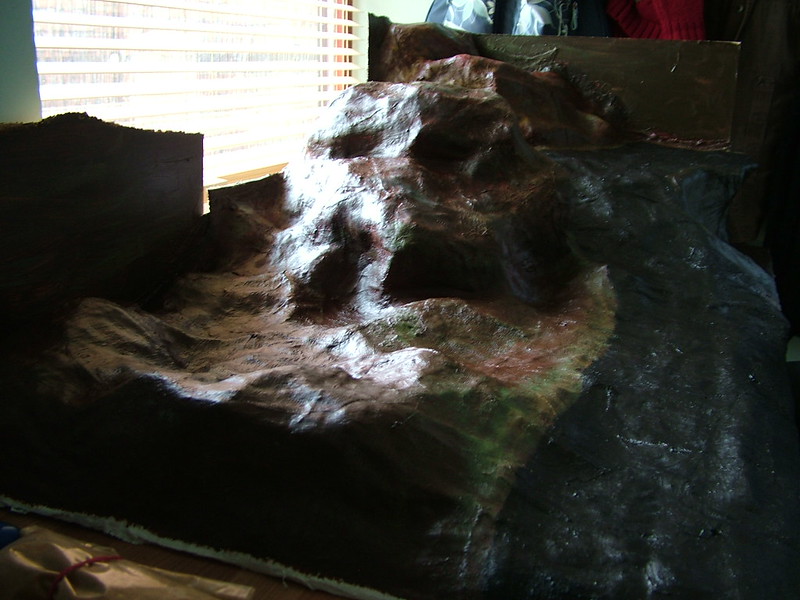 |

|

|
|
|
#3 |
|
El Hombre
Offline Posts: 3,121
 -->
-->
Join Date: Apr 2010
|
Very nice, potential to look like Okinawa after the Japanese defeat.
|

|
! |

|
|
|
#5 |
|
G.I.JOE ITALIAN COLLECTOR
Offline Posts: 27,808
 -->
-->
Join Date: Jan 2007
|
Well done!
|

|

|
|
|
#6 |
|
Not Enough Time
Offline Posts: 1,007
 -->
-->
Join Date: Aug 2009
|
5) Next, I sprayed the surface of the model with diluted PVA glue, and sprinkled the grass scatter over the glue-sprayed parts. I mixed together different shades of scatter, as real grass is more than on colour. Next I used fine ballast to create the road surface. Same as with the grass, I sprayed diluted PVA glue over where the road was going to be and sprinkled the ballast over the area. After it all dried overnight, I up-ended the model and gave it a gentle shake to lose the excess sprinkle. The excess could be saved for later.
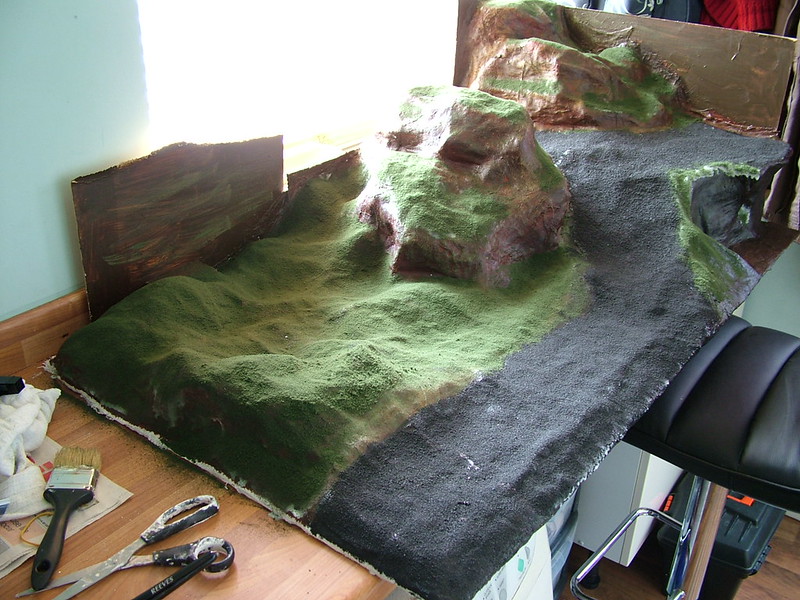 6) I then added the excess to bits of coarse scatter here and there to highlight certain areas. By this time I was curious as to what an action figure looked like in the set. Here you can see an Ugha warrior on the grassy area.   |

|

|
|
|
#7 |
|
Not Enough Time
Offline Posts: 1,007
 -->
-->
Join Date: Aug 2009
|
7) Next, I glued some Woodland Scenics clump foliage and Hornby Skale Scenics shrubbery to parts of the model, both to create height and depth to the landscape, and also to create opportunities to depict different scenes in my photography. For example, I could have someone hiding behind some shrubbery, and create different angles and compositions to tell the story. I think one of the things I wanted to do was to be able to condense several things into one set, so that I could get the most from it.
 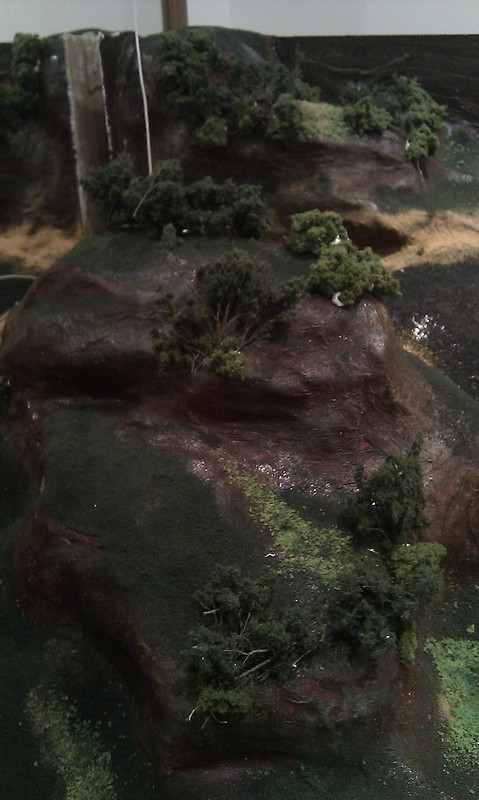  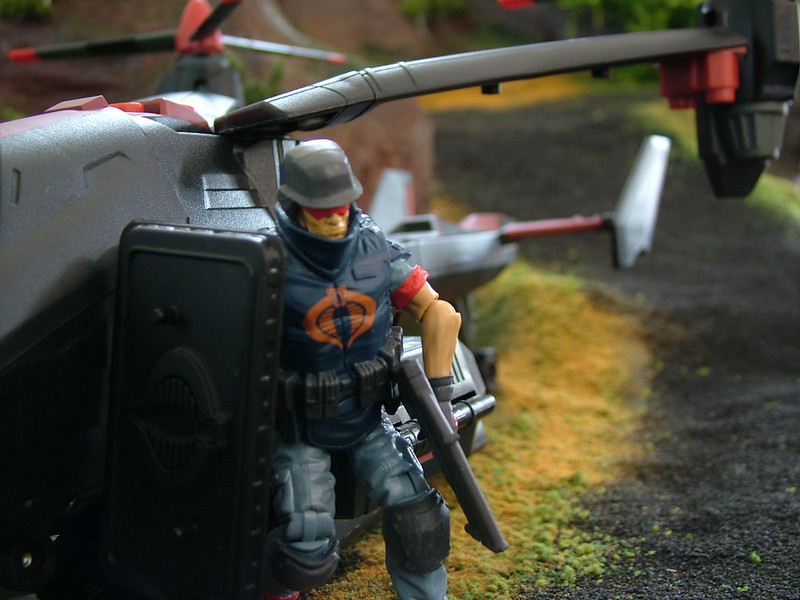 One thing I realised after making this, was that there are ways to make my own clump foliage, using shredded foam sponge, paint and a blender. I hope to try that someday when I have a blender to "spare". |

|
 |
«
Previous Thread
|
Next Thread
»
| Thread Tools | |
| Display Modes | |
|
|
Powered by: vBulletin Version 3.0.6
Copyright ©2000 - 2025, Jelsoft Enterprises Ltd.
Style Design By: vBStyles.com
Copyright ©2000 - 2025, Jelsoft Enterprises Ltd.
Style Design By: vBStyles.com







 Hybrid Mode
Hybrid Mode
